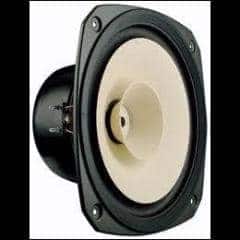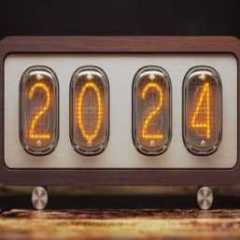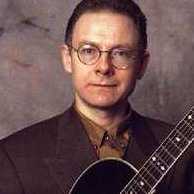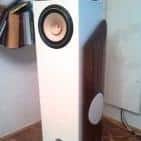Najbolji članovi
Popularan sadržaj
Showing content with the highest reputation on 09/05/18 u svim oblastima
-

The Basics of Sound
Spachek i jedan drugi je reagovao/la na Aleks za temu
The Basics of Sound Before discussing the specific components of audio-related circuits and electronics, let's first take a crash course on the basic concepts of sound. Sound is simply a type of energy vibrating through a medium (such as air or water); this energy, within a specific range of frequencies, is interpreted by the human ear as sound. Sound is made up of three basic elements: Frequency: how fast the vibrations are occurring Intensity: how loud the sound is Timbre: the sound's quality The human ear can detect sound frequencies ranging from 20 to 20,000 Hz. However, the human ear is more sensitive to (i.e. able to discern at lowest intensity) frequencies ranging between 2,000 and 5,000 Hz (see Hearing Range - Wikipedia). Recall that Hertz (Hz) is a unit defined as cycles per second. A sound's intensity corresponds to the amount of energy associated with that sound. The decibel (dB) is used for measuring the sound's energy in a way that is relevant to how humans perceive loudness. In the context of audio, the decibel is defined as follows: dB = 10 log10 (I/I0) where I = the measured intensity (W/m2) I0 = 10-12 W/m2, which represents the lowest sound intensity detectable by the human ear The figure below shows a variety of sounds and their dB intensity measurement. Examples of sounds and their intensity (in dB). Image courtesy of ODYO Hearing Care. Timbre is the complex wave pattern that occurs when overtones (also referred to as harmonics) are present along with the fundamental frequency. For instance, a tuning fork is designed to produce exactly one specific frequency, called the fundamental frequency. Let's say we have a tuning fork that produces a middle C note (261.62 Hz)—click here to hear middle C tuning fork. Since a tuning fork generates only one frequency, no other frequencies (overtones) exist. However, if you were to hear a middle C played on a violin—click here to hear middle C on violin, you would hear both the fundamental frequency (261.62 Hz) and a variety of other, albeit less intense, frequencies (overtones). The specific intensity of each overtone is largely credited for giving an instrument (or a person's voice) its unique timbre (also called tonal quality). Microphones: Dynamic, Condenser, and Electret The microphone is responsible for converting changes in sound pressure to changes in electric current. The intensity of the changes in sound pressure corresponds to the AC voltage amplitude generated by the microphone. Likewise, the frequency of the changes in sound pressure corresponds to the frequency of the AC voltage. Obviously, if any overtones are present, they too are present in the electrical signal generated by the microphone. Three common types of microphones are the following: dynamic condenser electret The Dynamic Microphone The dynamic microphone consists of a plastic diaphragm, a voice coil, and a permanent magnet. See figure below. A dynamic microphone cross-section. Image adapted from MediaCollege.com When varying sound pressure is applied to the diaphragm, the voice coil moves back and forth through the magnet's magnetic field, resulting in a voltage across the leads of the voice coil. Hence, the sound pressure is converted to a voltage signal. Dynamic microphones are known for being very rugged, for being able to operate over a wide temperature range, for providing smooth and extended frequency response, and for not needing an external power source. They are widely used in applications such as public address and high-quality recording. The Condenser Microphone The condenser microphone (see figure below) uses a pair of charged plates that can be brought closer together or forced farther apart by changes in air pressure (i.e., sound). In doing so, the charged plates act like a sound-sensitive capacitor. This type of microphone works in conjunction with a low-noise, high-impedance amplifier. Condenser microphones are known for providing crisp, low-noise sound and are used for producing high-quality sound recordings. A condenser microphone's basic components. Image adapted from ProSoundWeb The Electret Microphone An electret microphone is actually a microphone and a JFET in a single package. The gate of the JFET provides a very high impedance and thus ensures that the charge on the electret element remains fixed. The charge must remain fixed to ensure that changes in capacitance (caused by sound waves) result in voltage changes. The JFET also converts the varying (gate) voltage into varying (drain-source) current. While the electret element itself does not require power (because its permanently charged) the overall electret microphone device requires a power supply because the integrated JFET needs bias current. Older electret microphones were known to deliver poor performance, but modern devices can compete with condenser microphones. An electret microphone, Image adapted from Northwestern University. Types of Speakers Microphones convert sound signals into electrical signals. Speakers do the exact opposite: they convert electrical signals into audible (sound) signals. The dynamic speaker, which uses the same operating principles as the dynamic microphone, is the most popular speaker used today. When a varying electrical signal (current) is channeled through a moveable coil (voice coil) surrounded by a magnet, the coil moves back and forth. Cones (often made of paper) attached to the moving coil then produce variations in air pressure (i.e., sound waves) that correspond to the electrical signal driven through the speaker coil. Parts of a dynamic speaker. Image courtesy of the Virtual Institute of Applied Science Every speaker has a nominal resistance—or, more accurately, an impedance—that represents the average resistance between the speaker leads. Thus, speakers behave similarly to resistors when placed in series and in parallel. See the figure below. Speakers in parallel behave the same as resistors in parallel. Frequency response, an important speaker characteristic, represents the frequency range over which a speaker can successfully propagate sound waves. Speakers can be categorized according to the frequency range that they are designed for: Woofers: speakers designed specifically for low frequencies (less than 200 Hz) Midrange: speakers designed to accommodate frequencies ranging from 500 Hz to 3000 Hz Tweeter: a dedicated speaker type specifically designed to handle frequencies above those of midrange speakers Full-range speakers: capable of handling frequencies ranging from 100 Hz to 15,000 Hz Full-range speakers have inferior sound qualities when compared to a sound system consisting of woofers, midrange speakers, and tweeters. Such a three-way speaker system is illustrated below. A typical three-way speaker system consisting of a tweeter, a midrange speaker, and a woofer. Image adapted from Georgia State University Amplifiers 101 Audio amplifier have three types of classification: Preamplifier Low-power amplifier Power amplifier An audio preamplifier (often shortened to "pre-amp") is an electronic device that amplifies a very weak signal from a microphone, as an example, into signals strong enough to manipulate. Pre-amps are often simple, fixed-gain amplifiers designed specifically for low-noise performance. A low-power amplifier is often used to manipulate signals including such aspects as volume and frequency equalization. This type of amplifier generally focuses on changing the character of the signal in desired ways while introducing as little unwanted distortion as possible and may provide little to no actual power amplification. An audio power amplifier ("power amp") is used to increase the signal power so as to drive a load, such as output speakers. Similar to pre-amps, power amps are often fixed gain (in terms of signal amplitude) so that designers can focus on high-power gain and the power handling challenges that typically result. In simple audio systems where high power and high fidelity are not critical factors, a single-amplifier circuit may perform all of these functions, and, in fact, specially designed operational amplifiers, such as the LM-386 Low Voltage Audio Power Amplifier, are often used this way. A Class D audio amplifier is a switching or PWM amplifier where the switches are either fully ON or fully OFF, which significantly reduces the power losses. Class D amplifiers take on many different forms, including some that have digital inputs while others have analog inputs. Conclusion Audio electronics can be summarized as converting sound to electrical signals, processing the electrical signals, and turning these processed signals back into sound. This is a straightforward objective; nevertheless, this particular discipline of electrical engineering covers many areas of the EE world. In fact, many practicing engineers spend their entire careers researching, developing, and designing audio electronics and related equipment.2 poena -
2 poena
-

The Basics of Sound
djmilicic i jedan drugi je reagovao/la na skrstic za temu
Ovo samo pivo može da spere. U velikim količinama.2 poena -

Zanimljive, smešne i čudne fotografije
Mikorist i jedan drugi je reagovao/la na Leonardo za temu
Promeniti ime foruma u - OrthodoxDiyAudio.rs Al' onda nema ni pogače, fokače, kavurme, pragnjići, kotlići i banjski nudizam Ebeš život, šta ti ostalo. Trandže, cevke i žičurine.2 poena -

MZ RIP Oda UP-102 pretpojacalo
vladd i jedan drugi je reagovao/la na mutayu za temu
Greska, mislio sam na 5534. Znam da ima i boljih, nisam jos nista definitivno odlucio. Ovaj mi leze kao direktna zamena za ruski na plocicu a za ostale tek treba da proverim. Ako imas neki konkretan predlog daj slobodno, iscitacu datashhetove pa cu da vidim! Radi uredjaj najnormalnije, sve komande u funkciji, potenciometri ne suskaju. Na njega je doveden analogni audio signal iz TV a iz njega dalje izveden u pojacalo snage pa na zvucnike. Ne umem da opisujem zvuk onim popularnim izrazima, svira kao i sve drugo. Fabrika koja ga proizvodi kad nema drugog posla pravi i ovo:2 poena -
2 poena
-
1 poen
-
1 poen
-
Zinat, zavera, lepo si pisao o SIT-u.1 poen
-
1 poen
-
Hvala ti na tome, vec mi se svidja, samo ima jednu ozbiljnu manu - vec je napravljeno! Meni je poenta cele ove zajeb*ncije da sam nesto napravim i da to ispadne kako treba!1 poen
-
1 poen
-
Osnove si savladao, sve znaš, idemo dalje.1 poen
-
1 poen
-
U leb ti j..em Kupio si Ruskog Transformersa! Ako mu promenis operacione,mozda moze da bidne i podmornica1 poen
-
Nema čovek osciloskop pa ne zna kako zvuči.1 poen
-
Ne moze rastanak proci bez Karlosa . . . odavno nisam preslusao ovaj Live album sa Badi Majlsom . . . Svaka cast Badiju, ali steta je prava sto ovde na albumu nema Majkl Sriva ( verovatno dobio slobodne dane od Karlosa ? ). Nedostaje mi, jbga. Honolulu, Havaji, daleka 1972 g. Btw, svirka klasicna tezga ( Evil Ways je eklatantni primer ), ali pashe.1 poen
-
1 poen
-
1 poen
-
Guvernala gore a cuna dole1 poen
-
Trenutno na sajtu 6 članova, 1 Skrivenih, 30 Gosta (Pogledaj celu listu)
-
Forumska statistika
8.9k
Ukupan broj tema434.4k
Ukupan broj objava -
Statistika članovȃ
























